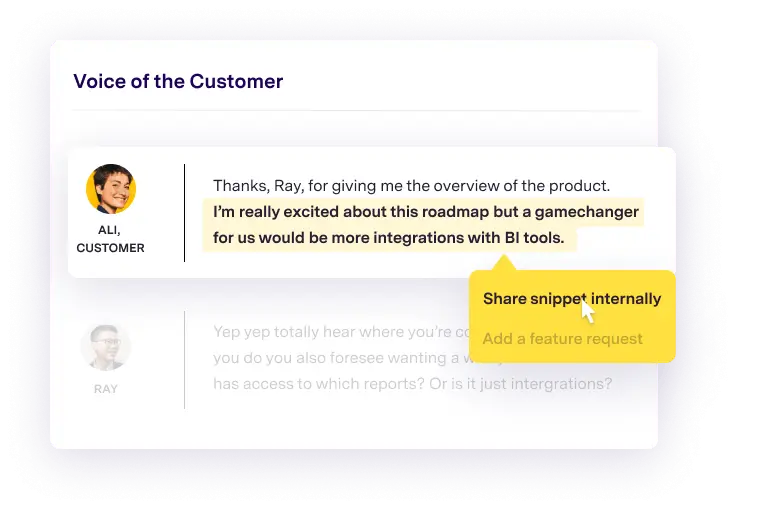Cold calling isn’t dead: Proven strategies that book more meetings
Dinosaurs: Dead.
Pagers: Dead.
Charlie from Lost: Dead
But you know what is NOT dead? COLD CALLING.
I know. I know. I know. I know what you are thinking.
Cold calling never works.
That’s a true statement IF you don’t listen to what the data tells you about cold calling.
Speaking of data, Gong is a data-first company. So how do we get all of this data?
What about this (Gong) data
The Gong Revenue Intelligence platform captures millions of customer data points (anonymized, of course) from phone calls to web conference meetings to emails. We couple that data with our AI tool to analyze the buyer and seller relationship — specifically how various actions (and inactions) and behaviors impact success rates.
The goal: Moving a deal through the sales funnel — cold call to booked meeting and meeting to negotiation and proposal & pricing conversation to a new logo.
Here’s what it looks like:

Each of those data points in the image above tells you something about how successful the deal will be.
Alright. Let’s dive into how to cold call.
How To Cold Call #1: Nail the opener
My friend’s 9-year-old used to introduce himself as Cal. “Hi, my name is Cal.” My buddy has been working with Cal to move from “Hi, my name is Cal” to “Hi, my name is Cal Waldow.” (first AND last name).
Yes, he’s 9. But it matters, especially as you get older and especially during the opening of a cold call.
People who introduce themselves with their full name command respect.
Cal isn’t in sales. Cal doesn’t have a full-time (or part-time) job. Again, he is only 9 years old! But you do. You are in sales. You work for a real company.
So introduce yourself that way. It sounds like this:
“Hi, Jenn. This is Jonathan Costet calling from Gong.io …”
Using your full name and company name makes you sound more important, more formal (less casual).
Also, employing this tactic ensures you, the seller, maintain control. The person who asks the questions controls the conversation, especially during cold calls.
If you fail to provide your last name and company name, you are likely to get met with this: “Wait. Who is this? What company are you with?”
When they’re asking the questions, you have lost control.
How To Cold Call #2: Use a pattern interrupt
“How have you been?”
No. I’m not really asking YOU that question (but how are you?).
When we analyzed 90,380 cold call stats, “How have you been?” far outperformed all of the other opening lines (after first & last name and company name).
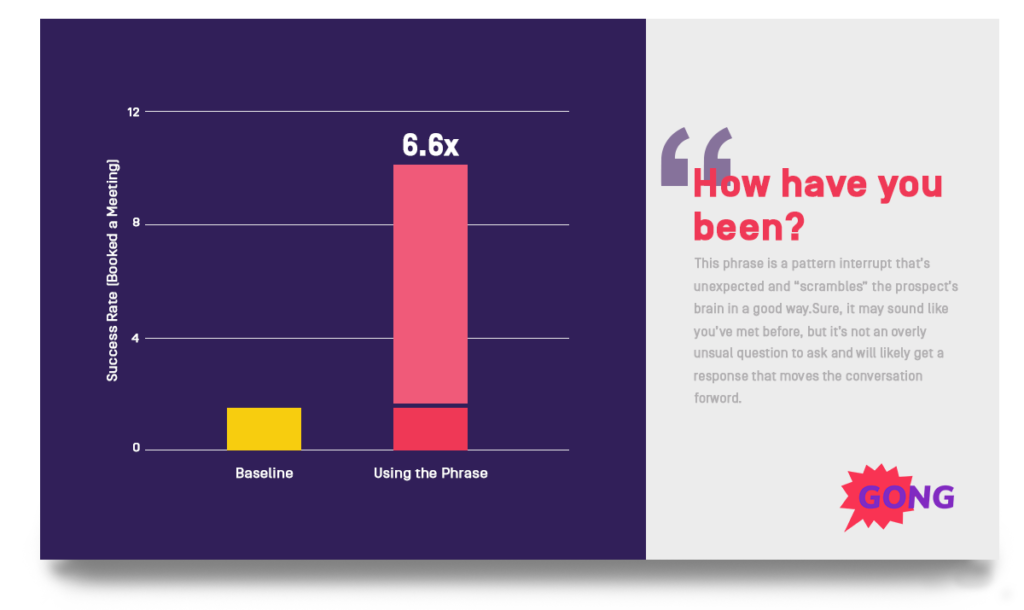
How much better? “How have you been?” had a 6.6x higher (10.01%) success rate than the baseline.
Here’s the thing: Asking someone how they have been implies you’ve had a previous interaction (but you haven’t — it’s a cold call!)
This approach works because it is unexpected, a pattern interrupt that jumbles the prospect’s brain a bit (in the okay to do kinda way).
The pattern interrupt is your best friend.
How To Cold Call #3: Avoid this “Best practice”
“Hi, Jenn. This is Jonathan Costet calling from Gong.io…”Opener. Nailed.
Then you ask, “Did I catch you at a bad time?”
To which the buyer (whom you’ve never spoken with before and only knows your first and last name and the company you work for) says, “Not at all. You caught me at the PERFECT time. I was just thinking to myself, when is Jonathan Costet from Gong going to call me? and then, BOOM, you called! Thank you so much. What’s up?”
Riiiiight. But wouldn’t that be amazing if all cold calls started that way?
Yet, many reps are taught to ask this “best practice” question (quotes intentional).
The reality: Leading off with “Did I catch you at a bad time?” makes you 40% less likely to book a meeting:
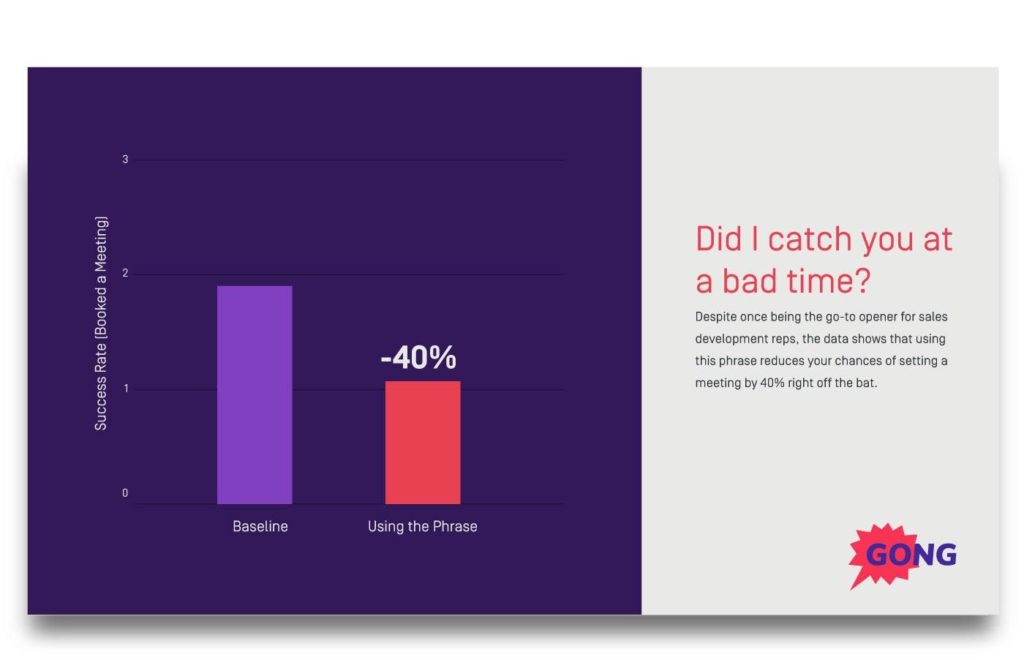
That’s a 0.9% success rate.
Less than 1%. Less than 1 out of a 100.
How To Cold Call #4: State the reason for your call
“Hi, Jenn. This is Jonathan Costet calling from Gong.io. How have you been?”
(Wait for an answer. Engage appropriately.)
Then follow with, “the reason for my call is …” (followed by the actual reason for your call!);
This phrase — stating the reason for calling — increases your success rate by 2.1x:
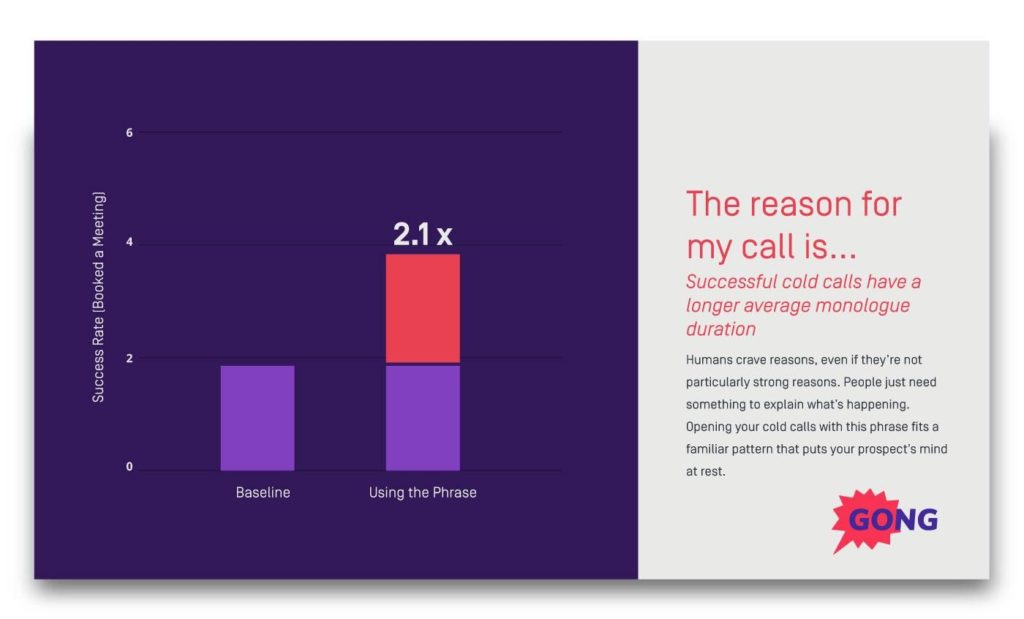
Providing the answer as to why you are calling keeps you in control of the conversation. It’s hard for a buyer to ask, “Wait. Why are you calling?” when you just shared the why.
You are putting your buyer’s mind at rest.
How To Cold Call #5: Make one targeted value prop
You have permission to continue. Your buyer is waiting with bated breath. Or at least they haven’t ended the call yet.
You now have the floor. It’s time to make your pitch, to sell the meeting << the ultimate goal of a cold call.
While “pitch” seems like an unfriendly word, this is the best time to tell ‘em why they can’t live without your product or service.
Successful cold calls ALMOST ALWAYS involve making some type of sales pitch:
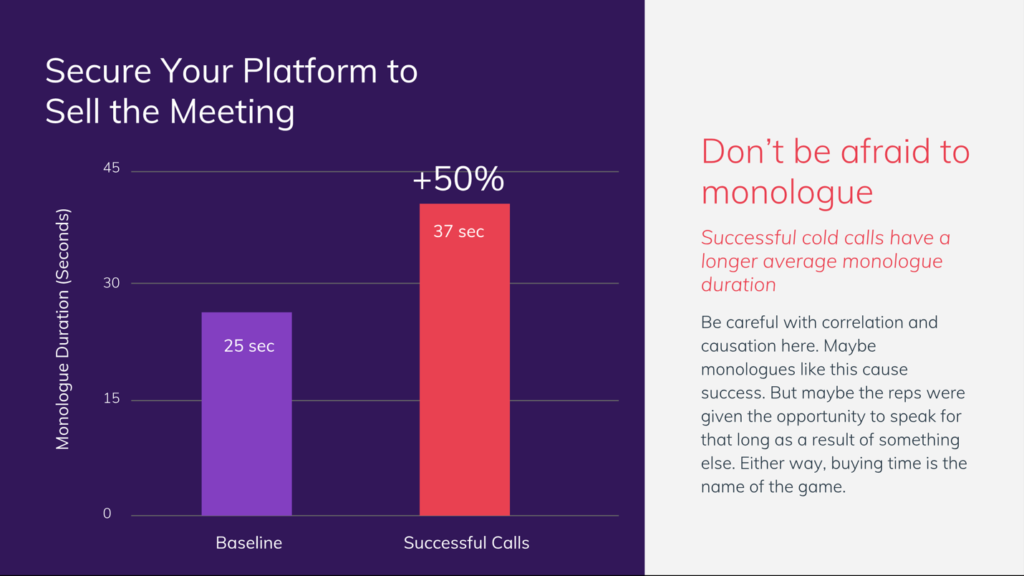
No need to come in hot with the pitch. Be sure you’ve done all of the above FIRST.
Your monologue can be long(er) than the average (non-cold call) one. This is the time to SELL THE MEETING.
Here is what it could sound like:
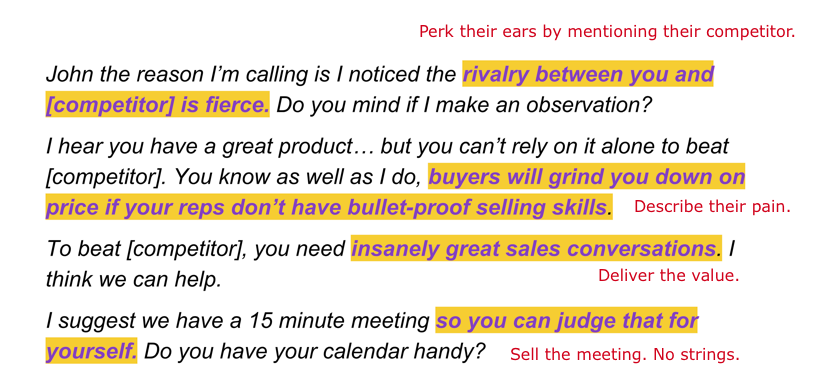
- Mention their competitor: This shows you understand the landscape.
- Describe their pain: Proves you know what matters most to them, what they are struggling with.
- Deliver the value: Tells them what they need to do to eliminate the pain.
- Sell the meeting (no strings): You are inviting them to a meeting without directly mentioning your product or service.
“You can judge that for yourself” is a great phrase to sell the meeting, not the product. Allow them to make the decision, to be in control.
Need more inspiration? Check these cold calling examples to book A LOT more meetings.
How To Cold Call #6: Avoid discovery questions
While it may seem obvious, it’s worth spelling out: A cold call is not a discovery call.
A discovery call is all about listening (2x as much as you talk).
A cold call is all about talking (selling the meeting). So, more talking … less listening!
Our data show the talk-to-listen ratio for successful cold calls is higher than unsuccessful ones:
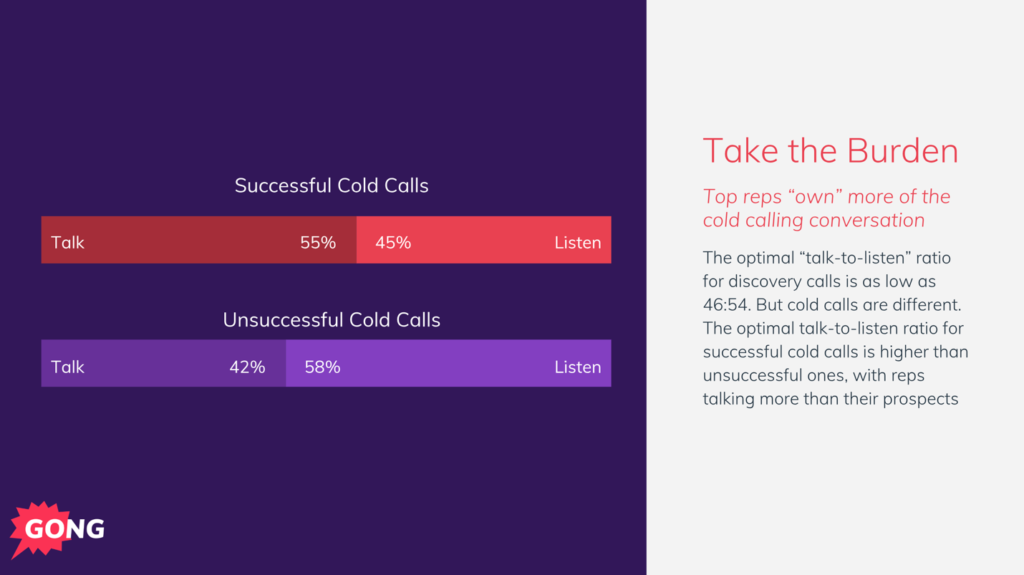
The best reps take the burden; they “own” more of the cold-calling conversation.
Save the “What are your top strategic priorities this year?” type inquiry question for after you lock in the meeting.
How To Cold Call #7: Use this closing question
You’ve done the hard work.
Your buyer has answered the phone. You controlled the conversation. You sold the meeting (not the product).
You are getting yes after yes after yes.
Next up: Make it official (schedule the actual meeting) with this closing question:
Do you have your calendar handy?
And then you wait until they put the call on their calendar.
Done.
How To Cold Call #8: Get next steps locked in
The meeting is on their calendar. You are done. Right?
Almost. You still need to schedule the next steps.
Some of the most successful cold calls involve extra time spent talking through “next steps” at the end of the conversation, after the meeting has been added to your buyer’s calendar.
In fact, in some of the most successful cold calls we looked at, “Next Steps” consumed about half of the sales conversation.
Don’t run out of time. We get it. It’s hard to balance all of this, but you must save time for next steps … if you want to win more deals.
Shorten your pitch if you have to. Ensure you have sufficient time to work through what a next step looks like before the call ends.
How To Cold Call Tip #9: Overcome your fear (and make one more call)
Persistence is one of the most essential character traits of a sales rep (that and thick skin).
Cold calling is often a numbers game.
Make more calls (more dials), and you’re likely to get more hits. More hits = more booked meetings and more opportunities for sales.
At least 6 call attempts: That’s what InsideSales.com recommends:
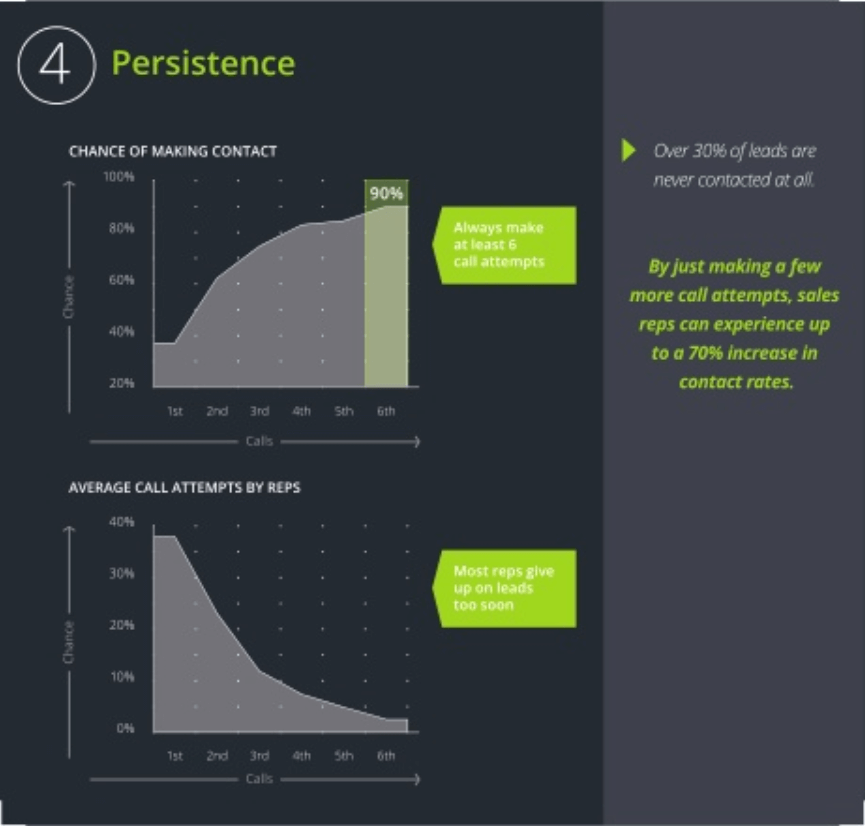
Persistence pays.
These cold calling scripts are yours.
You’ve read the cold calling tips, now it’s time to grab the cold calling scripts.
These 3 highly effective cold calling scripts are backed by data, insights from hundreds of thousands of calls.
You will be prepared for every cold call scenario … voicemail, follow-up email, and more.
Cold calling: NOT DEAD.

